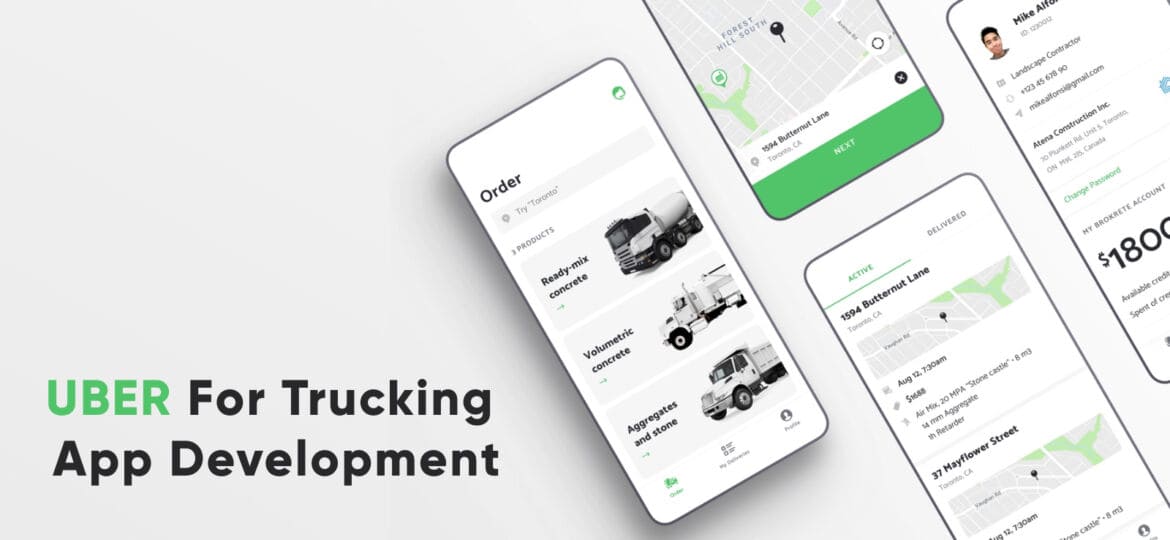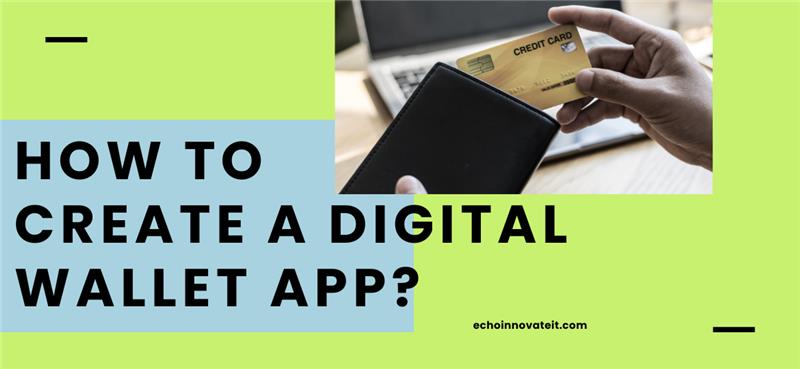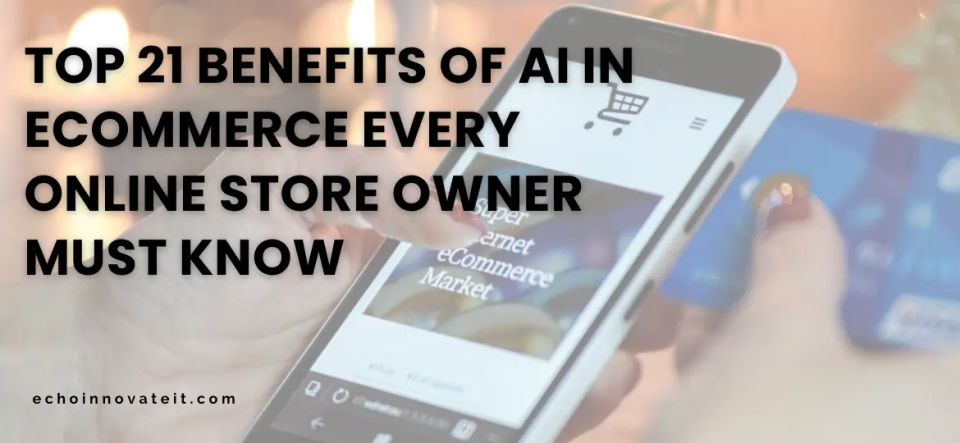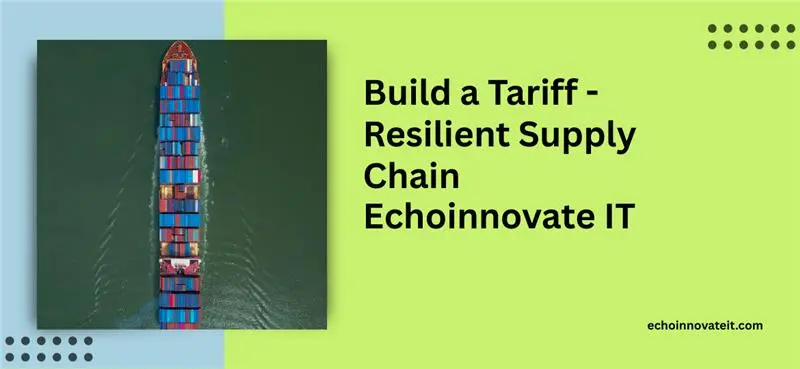Uber for Trucking App Development in 2025: The Future of On-Demand Logistics in the USA
In 2025, the logistics and freight industry in the United States is being revolutionized by on-demand mobile trucking apps — also known as “Uber for Trucking” platforms. These innovative Android and iOS apps are redefining how businesses book, track, and manage shipments in real time.
From large-scale freight companies to small trucking fleets and independent truckers, the Uber for Trucks app model delivers cost efficiency, transparency, and automation through advanced technologies like AI, IoT, GPS tracking, and predictive logistics analytics.
In this comprehensive guide, we’ll explore how to develop a trucking app like Uber Freight in 2025, the latest market trends, essential app features, monetization models, and best SEO practices for logistics startups targeting the U.S. market.
What Is an “Uber for Trucking” App?
An Uber for Trucking app is an on-demand freight-matching platform that connects shippers and carriers via a mobile app. It allows shippers to post loads and truckers to find and accept jobs in real time — similar to how Uber connects riders and drivers.
These apps help eliminate inefficiencies, reduce downtime, and optimize freight movement using digital automation.
Key functionalities include:
Load posting & matching
GPS-based route optimization
Real-time shipment tracking
Secure payments
Proof of delivery
Automated billing and analytics
By integrating these features into Android and iOS mobile apps, logistics companies can streamline their operations and improve visibility across the supply chain.
Why the U.S. Trucking Industry Is Going Digital in 2025
1. Explosion of On-Demand Delivery
E-commerce, manufacturing, and B2B logistics sectors have driven massive demand for on-demand trucking and freight apps. Businesses now prefer real-time truck booking over traditional broker-based systems.
2. Driver Shortage and Route Optimization
The U.S. trucking industry faces persistent driver shortages. AI-driven route planning and digital load matching in trucking apps are helping optimize driver utilization and fuel consumption.
3. AI, IoT & Data-Driven Supply Chain
AI and IoT sensors in trucks improve load tracking, route prediction, and vehicle maintenance. These technologies are core to the 2025 logistics app ecosystem.
4. Sustainability and Green Logistics
Carbon-tracking APIs and eco-friendly route mapping are trending. Trucking startups that focus on sustainability gain better search visibility, credibility, and long-term brand value.
Key Features of an Uber-Style Trucking App
A high-performing Uber for Trucks mobile app in 2025 should include features for three key users: shipper, driver, and admin.
Shipper App Features
Quick load posting
Freight rate estimation
Real-time truck tracking
Instant notifications
Digital proof of delivery
Payment gateway integration
24/7 customer support
Driver App Features
Load discovery & acceptance
Route optimization with GPS
In-app communication
Earnings dashboard
Fuel-efficient routing suggestions
Document upload (BOL, invoice)
Review & rating system
Admin Dashboard
User & driver management
Real-time analytics
Trip management & dispute handling
Commission management
Data-driven insights with AI
By combining these modules into one cross-platform mobile app (Android + iOS), logistics companies can modernize fleet operations and improve productivity.
Monetization Models for Uber-Like Trucking Apps
Commission-based revenue model — Earn a percentage from every completed shipment.
Subscription plans — Offer premium features to frequent shippers.
Freemium model — Provide basic access with paid upgrades.
In-app advertising — Partner with logistics, tire, and fuel brands.
Data insights & analytics sales — Offer anonymized logistics data to enterprises.
Step-by-Step Process: Building an Uber for Trucking App in 2025
Market research & competitor analysis (e.g., Uber Freight, Convoy, DAT)
Define unique features & business model
Select tech stack (Flutter, Kotlin, Swift, Node.js, AWS)
UI/UX design for drivers & shippers
Develop Android & iOS mobile apps
Integrate GPS, geofencing, and AI analytics
Ensure E-E-A-T compliance (transparency, credibility, expertise)
Test app for security, scalability, and speed
Launch marketing campaigns & ASO optimization
Scale with local SEO targeting major U.S. logistics cities
Geo-Targeted SEO for U.S. Trucking Startups
To rank higher and attract more leads from the USA, optimize your app or website for geo-specific trucking keywords such as:
trucking app development USA, Uber for trucks California, freight matching app Texas, logistics app New York, trucking startup Florida, load booking app Chicago, Android freight app Houston, iOS trucking app Dallas.
SEO Tips for U.S. Logistics Companies
Create dedicated landing pages for major states and cities.
Optimize with local schema markup.
Publish blogs on topics like “Best Trucking Apps 2025” or “Top Freight Solutions in the USA.”
Encourage customer reviews and testimonials.
Keep updating content to align with Google’s Helpful Content Update 2025.
Future Trends in Trucking App Development (2025–2030)
AI & machine learning-based load forecasting
Autonomous truck integrations
Blockchain for transparent transactions
Electric & smart trucking systems
Voice-enabled booking systems (voice search optimization)
Augmented reality for maintenance assistance
Predictive analytics for fleet management
Why Choose Echo Innovate IT for Trucking App Development
Echo Innovate IT is one of the leading mobile app development companies in the USA, specializing in Android and iOS app development for logistics, freight, and transportation startups.
With proven experience in Uber-like app development, our team builds scalable, high-performance, and feature-rich trucking platforms powered by AI, IoT, and GPS-based tracking — helping businesses accelerate growth, improve driver efficiency, and achieve higher ROI.
If you’re planning to build your own Uber for Trucking app in 2025, Echo Innovate IT is your trusted partner.
The on-demand service trend was started back in 2009 during the genesis of a new technology company called uber started the on-demand taxi. After that nothing remained the same, Uber became a perfect model for any kind of on-demand service that came into the market. These services became Uber for X. Read here how Uber for trucking app development is beneficial.
A few years later, Uber came up with a new solution called Uber for trucks that aggregated owner-operators and shippers much like their ride-hailing app paired drivers with riders.
Today, in the market, there are several successful uber trucking startups who rake up handsome revenue. Truckerpath, Convoy, and Keeptruckin are some of them. You might wonder what makes these startups successful.
- Today, in the market, there are several successful uber trucking startups who rake up handsome revenue. Truckerpath, Convoy, and Keeptruckin are some of them. You might wonder what makes these startups successful.
- How do uber for trucking app development become a trending business idea among investors?
- Also, how much does uber truck app development cost?
- How to connect with an app development company to build mobile apps?
- How to communicate with the development team for app development?
- In this article, we have explained the working and features of these kinds of apps. Let’s Explore them.
How to Build an App Like Uber For Trucks?
These apps are basically a marketplace that connects shippers with truckers. It is created in such a way that drivers don’t have to look out for the loads by hiring any broker or constantly struggling to get the haul. On the other hand, shippers can also find the best suitable driver for their shipment. One of the major problem truck drivers faced before the invention of these on-demand trucking apps were their empty rides. They had to bear a huge loss due to this. According to Freightwaves, 15.63 percent of miles driven by dry van fleets are empty. However, Uber for the trucking marketplace makes sure that truckers get full load during their trip and do not have to return with an empty truck
The whole process takes place in some stages.
- Truckers look for the available Loads (Shippers)
- Negotiate and bid for the load
- Confirm the Load
- Deliver the Shipment
- Generate Online Documents
- Receives the Payment in the app
- Search for the new load While returning
The app must have a variety of features integrated with the design to perform so many tasks. That said, let’s explore the characteristics of Uber for the trucking app and know how much it can cost.
Uber for Trucking App Development: Features to Include
While developing an uber app for freight, you need to develop two versions of the same app. One for the shippers and the other for the drivers. Additionally, you need a third panel for the admin to monitor the overall operations of your logistics business.
The set of basic and advanced features you integrate within your application is the deciding factor for the total cost of the app. The core features are essential to the proper functioning of your app, while the advanced ones will give it a distinctive look.
So, here are some of the features that a uber for commercial trucking app would need:
For the Shippers

Sign up & User Profile
Registration and profiles are two of the primary elements that an app like Uber needs for efficient customer service. It will not only help you monitor your consumer base but also allow your customers to access the full features of the app like mobile devices payments. It is the first section where your users will land. You can allow registrations via email or through social media login.
Schedule & Manage Booking
Top uber for trucking companies allow your shippers to choose the vehicle based on their needs. Transportation requirements differ depending on the contents that need to be delivered. Allowing the customers to pick the truck will add convenience for the users and the drivers to deliver the package in a single trip. Additionally, you can add an advanced booking feature. The consumers will be able to schedule and manage their bookings as needed according to the date and time.
Alerts & Notifications
Alerts and push notifications will keep the users in the loop with their deliveries, tracking, promo offers, and more.
Geo-Location & Routing
Adding a tracking feature for your customers will boost the user experience of your Cargo transport app. It will help them track their deliveries, the routes, and the drivers’ locations before or after pickup.
Payment Gateway
Making payments via the app is another level of convenience for the users. They can generate invoices with the cost of each item listed individually and pay accordingly through the online payment methods available.
Estimate fare Charges
The feature will let the customers know the estimated fare for the delivery, the destination, and the route with a specific type of vehicle. They can then decide what’s feasible according to their budget before they book the trip.
For the Drivers

Drivers are an imperative part of the trucking industry. One of the apps is for drivers partnering with your company. Here are the features to add for the drivers’ convenience:
Register and Set Up Profiles
Give the drivers a separate login area to track their delivery, rides scheduled, and more. They can log in via email, social media, or a new account credential.
Receive & Manage Bookings
The feature will make it convenient for drivers to manage their schedules and keep track of deliveries along with their status. They can know if there are any pending or completed shipments for the day.
Analyze Shippers Details
All the information from the shipper, including name, address, contact details, destination, and the invoice will be stored for the driver.
Freight Details
The weight of the package, the distance to travel, the fuel, and the toll charges will help the drivers charter freight details.
Route & Navigation
It will help the drivers provide roadside assistance & track the road to their destination. Plus, it will allow the users and the admin to keep an eye on the truck during delivery.
Notifications
The drivers need to be alerted of any new bookings, cancellations, payments, updates, and more. Push notifications will keep the communication open between the users and the drivers.
Bill Approval
Based on the fuel consumption, the toll, the distance traveled, refreshments, the drivers assign the bill, which is later approved by the admin.
Rating & Reviews
Rating and reviews are essential features to add to your trucking app. It will make the app more user-oriented, allowing them to rate the drivers based on their behavior, punctuality, and quality of service. Additionally, it will let the other consumers know what to expect with a particular driver. Plus, you can monitor your drivers and know which ones are more troublesome than others.
For the Admin (You)

The admin panel is another aspect of uber for trucking app development. It is primarily a web-based application that will give you the chance to supervise the business processes, development processes, manage drivers, deliveries, payrolls, and gather user information.
Secure Login
A secure login means only the authorized personnel with the relevant credentials can access the dashboard to maintain the system’s integrity.
Dashboard
Via the dashboard, the admin will be able to monitor incoming orders, pending deliveries, track shipments, and other information relevant to the business.
Monitor Drivers
The admin can manage the drivers taking the shipment, the number of orders executed, the deliveries pending and completed.
Manage Trucks, Shippers, and Tariffs
It’s not just the manual labor you need to track; the admin panel will also have the liberty to manage and store the vehicles, shippers, and costs incurred during deliveries.
Push Notifications
Notifications keep you in the loop at all times. For the admins, it’ll help track payments, driver allotments, and order completion.
Billing & invoice
The admin holds the authority to analyze and approve the invoice and billing generated by the customers and the drivers.
Trip Log Reports
Try to highlight the unique selling point of your dating app on social media. You just need one USP and that one USP can get you thousands of users on your app. Ake sure your USP is valuable to the users. It should not be something related to you and your business. It should be related to your audience and their interest.
The duration of the trip, including the start and end time, the milestones covered by the drivers are evaluated, recorded, and stored by the admin.
Fuel Consumption & Vehicle management
To keep the running of your company smooth and profitable, you need to know which vehicle is running what routes, suffering from damage, and the fuel consumed per trip. The admin panel will hold the feature for such management activities.
How to Make Your Uber for Truck Delivery App Unique?
Here are some of the extra features you can integrate with your trucking app to give it a competitive boost:
- In-app chat will keep the communication open between you and the consumers. Plus, it will increase user engagement on your app.
- Live delivery stats from merchants will let you stay on top of deliveries completed and pending, allowing you to assign tasks without delay.
- Multilingual support will open communication with the drivers from a different region, keeping operations running smoothly.
- Real-time analytics will give you real-time updates of new orders, the region with the most order requests, fuel consumption details, and vehicle status.
- Driver safety will track the safety score of the on-duty drivers based on their attitude while driving when delivering goods, phone usage, speed, and more.
- Multiple payment gateway integrations will make the app more convenient for users, offering transparent and reliable transaction procedures.
- Enabling cloud storage will meet your requirements for big data storage space.
How Much does it cost to Uber for Freight?
Now that we have more than 12+ years of experience in the IT field, Developed so many apps and custom software development, and many more. We will cover the features, you’ll need in your uber for trucking app development, here is the cost breakdown that you can expect: The price for each element mentioned varies according to its simplicity. For example, for sign-up, email registration can cost $2000. Another $1000 will get you a social media log-in, and an additional $2000 will give you a two-step verification feature with signup.
For profiles, the price can range from $4000 to $7000 depending on the complexity. Ratings and reviews can cost you $5000, while the price calculator feature will add another $3000 to the budget. The built-in calendar features to track deliveries cost $4000, payment gateways add another $7000, and GPS tracking can cost up to $15,000. Generally, hybrid apps are more costly than native apps for Android and iOS, with iOS being more affordable than Android developers.
If the Android and iOS native app development costs around $5000, then cross-platform apps would cost you up to $8,750. There is also another way, which costs you lower than these two options and it is buying an Uber freight clone.
Hiring a Development Company or a Freelancer
Your choice of developer also influences the final cost of the trucking app development. Freelance Mobile app designer will cost you less compared to a digital agency, but the accompanied hurdles are not worth the convenience. From communication troubles to differences in time zones, other problems disrupt the flow of development. There are so many mobile app development companies in the market. Full-scale development companies offer a smoother development experience, but the rates are higher than an average freelancer. The price may vary from $50 per hour or $2000 per week for simple projects management and development to $75 per hour or $3000 per week for complex apps.
Final Thought !!
On-demand apps are gaining recognition as an apt method for the customer service sector to cater to their consumer base on a global scale. With almost every business developing their mobile apps, it’s the best time to invest in the trucking industry. The cost of your uber for trucks app depends primarily on your choice of platform, the hourly rates of the company, and its global location. If you have any queries regarding uber for trucking app development, we would love to help you with the technical problems.
FAQs
How does Uber trucking work?
- Tuckers look for the available Loads (Shippers)
- Negotiate and bid for the load
- Confirm the Load
- Deliver the Shipment
- Generate Online Documents
- Receives the Payment in the app
- Search for the new load While returning
Which are the features included for the Uber trucking app?
For the shippers-
- Sign up & User Profil
- Schedule & Manage Booking
- Alerts & Notifications
- Geo-Location & Routing
- Payment Gateway
- Estimate fare Charges
For the Drivers-
- Register and Set Up Profiles
- Receive & Manage Bookings
- Analyze Shippers Details
- Freight Details
- Route & Navigation
- Notifications
- Bill Approval
- Rating & Reviews
For the Admin-
- Secure Login
- Dashboard
- Monitor Drivers
- Manage Trucks, Shippers, and Tariffs
- Push Notifications
- Billing & invoice
- Trip Log Reports
- Fuel Consumption & Vehicle management
What’s the best way to get backlinks in the trucking niche?
Publish helpful industry blogs, partner with freight directories, and get featured in logistics news or trade journals.
How can AI improve SEO results?
AI tools predict keyword trends, track performance, and automate optimization tasks — ensuring you stay aligned with every Google update.
Should trucking startups invest in SEO?
Absolutely — SEO drives consistent, low-cost traffic, lead generation, and brand trust in the U.S. logistics industry.



